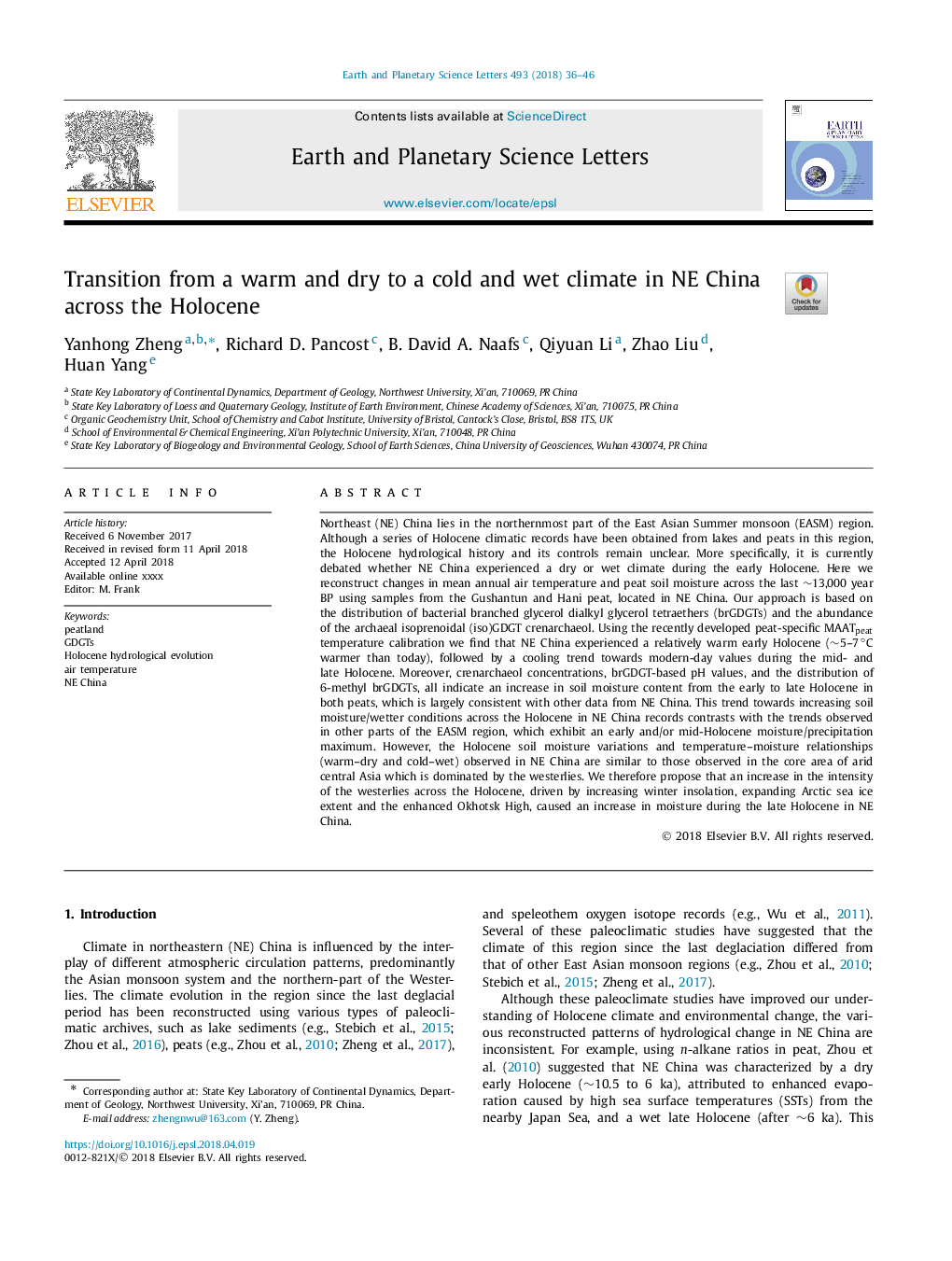| کد مقاله | کد نشریه | سال انتشار | مقاله انگلیسی | نسخه تمام متن |
|---|---|---|---|---|
| 8906854 | 1634663 | 2018 | 11 صفحه PDF | دانلود رایگان |
عنوان انگلیسی مقاله ISI
Transition from a warm and dry to a cold and wet climate in NE China across the Holocene
دانلود مقاله + سفارش ترجمه
دانلود مقاله ISI انگلیسی
رایگان برای ایرانیان
موضوعات مرتبط
مهندسی و علوم پایه
علوم زمین و سیارات
علوم زمین و سیاره ای (عمومی)
پیش نمایش صفحه اول مقاله

چکیده انگلیسی
Northeast (NE) China lies in the northernmost part of the East Asian Summer monsoon (EASM) region. Although a series of Holocene climatic records have been obtained from lakes and peats in this region, the Holocene hydrological history and its controls remain unclear. More specifically, it is currently debated whether NE China experienced a dry or wet climate during the early Holocene. Here we reconstruct changes in mean annual air temperature and peat soil moisture across the last â¼13,000 year BP using samples from the Gushantun and Hani peat, located in NE China. Our approach is based on the distribution of bacterial branched glycerol dialkyl glycerol tetraethers (brGDGTs) and the abundance of the archaeal isoprenoidal (iso)GDGT crenarchaeol. Using the recently developed peat-specific MAATpeat temperature calibration we find that NE China experienced a relatively warm early Holocene (â¼5-7â°C warmer than today), followed by a cooling trend towards modern-day values during the mid- and late Holocene. Moreover, crenarchaeol concentrations, brGDGT-based pH values, and the distribution of 6-methyl brGDGTs, all indicate an increase in soil moisture content from the early to late Holocene in both peats, which is largely consistent with other data from NE China. This trend towards increasing soil moisture/wetter conditions across the Holocene in NE China records contrasts with the trends observed in other parts of the EASM region, which exhibit an early and/or mid-Holocene moisture/precipitation maximum. However, the Holocene soil moisture variations and temperature-moisture relationships (warm-dry and cold-wet) observed in NE China are similar to those observed in the core area of arid central Asia which is dominated by the westerlies. We therefore propose that an increase in the intensity of the westerlies across the Holocene, driven by increasing winter insolation, expanding Arctic sea ice extent and the enhanced Okhotsk High, caused an increase in moisture during the late Holocene in NE China.
ناشر
Database: Elsevier - ScienceDirect (ساینس دایرکت)
Journal: Earth and Planetary Science Letters - Volume 493, 1 July 2018, Pages 36-46
Journal: Earth and Planetary Science Letters - Volume 493, 1 July 2018, Pages 36-46
نویسندگان
Yanhong Zheng, Richard D. Pancost, B. David A. Naafs, Qiyuan Li, Zhao Liu, Huan Yang,